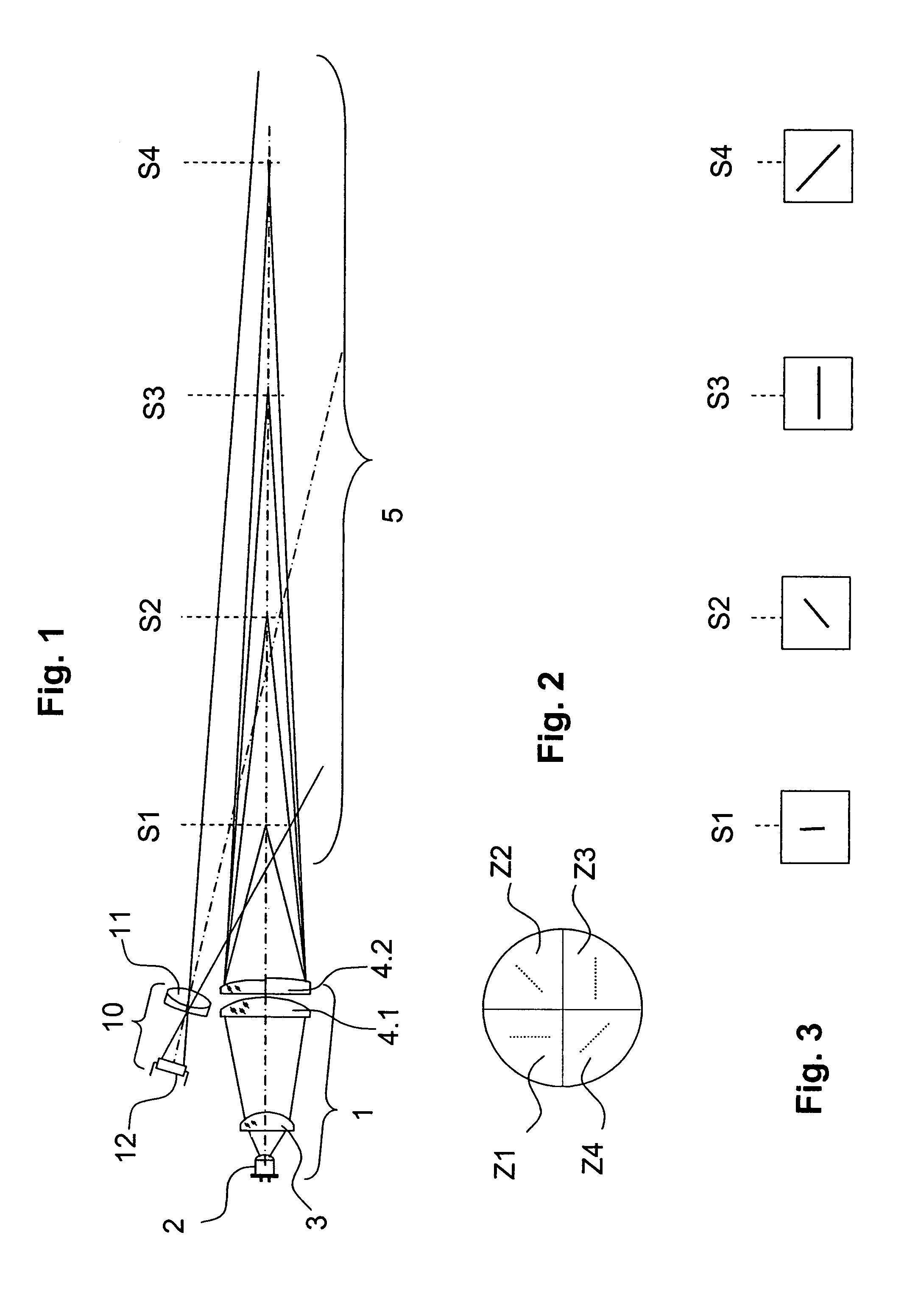Distance measurement instrument
a technology of distance measurement and distance measurement, which is applied in the direction of measurement devices, surveying and navigation, and electromagnetic wave reradiation, etc., can solve the problems of increasing the cost of production of the distance measurement device, and increasing the size of the measurement device, so as to achieve the effect of large focal depth, inexpensive production and inexpensive generation
- Summary
- Abstract
- Description
- Claims
- Application Information
AI Technical Summary
Benefits of technology
Problems solved by technology
Method used
Image
Examples
Embodiment Construction
[0022]FIG. 1 schematically illustrates the distance measuring device of the present invention which has a lighting unit 1 and a light receiving unit 10. The lighting unit 1 and the light receiving unit 10 are arranged in close proximity to each other so that the angle between their optical axes is small. However, if desired, a beam splitting mirror or a geometrically uncoupling mirror can be used which permits a positioning of lighting unit 1 and light receiving unit 10 so that their optical axes outside the distance measuring device extend parallel to each other. Lighting unit 1 includes a light source 2 and a transmitting optic that is aligned therewith. Light source 2 is preferably a semiconductor light source such as a laser or an LED. However, other light sources can also be employed. In the embodiment illustrated in FIG. 1, the transmitting optics are formed by a collimating lens 3 and a beam forming optic arrangement in the form of a transmitting lens 4.1 and a multi-zone len...
PUM
 Login to View More
Login to View More Abstract
Description
Claims
Application Information
 Login to View More
Login to View More - R&D
- Intellectual Property
- Life Sciences
- Materials
- Tech Scout
- Unparalleled Data Quality
- Higher Quality Content
- 60% Fewer Hallucinations
Browse by: Latest US Patents, China's latest patents, Technical Efficacy Thesaurus, Application Domain, Technology Topic, Popular Technical Reports.
© 2025 PatSnap. All rights reserved.Legal|Privacy policy|Modern Slavery Act Transparency Statement|Sitemap|About US| Contact US: help@patsnap.com


